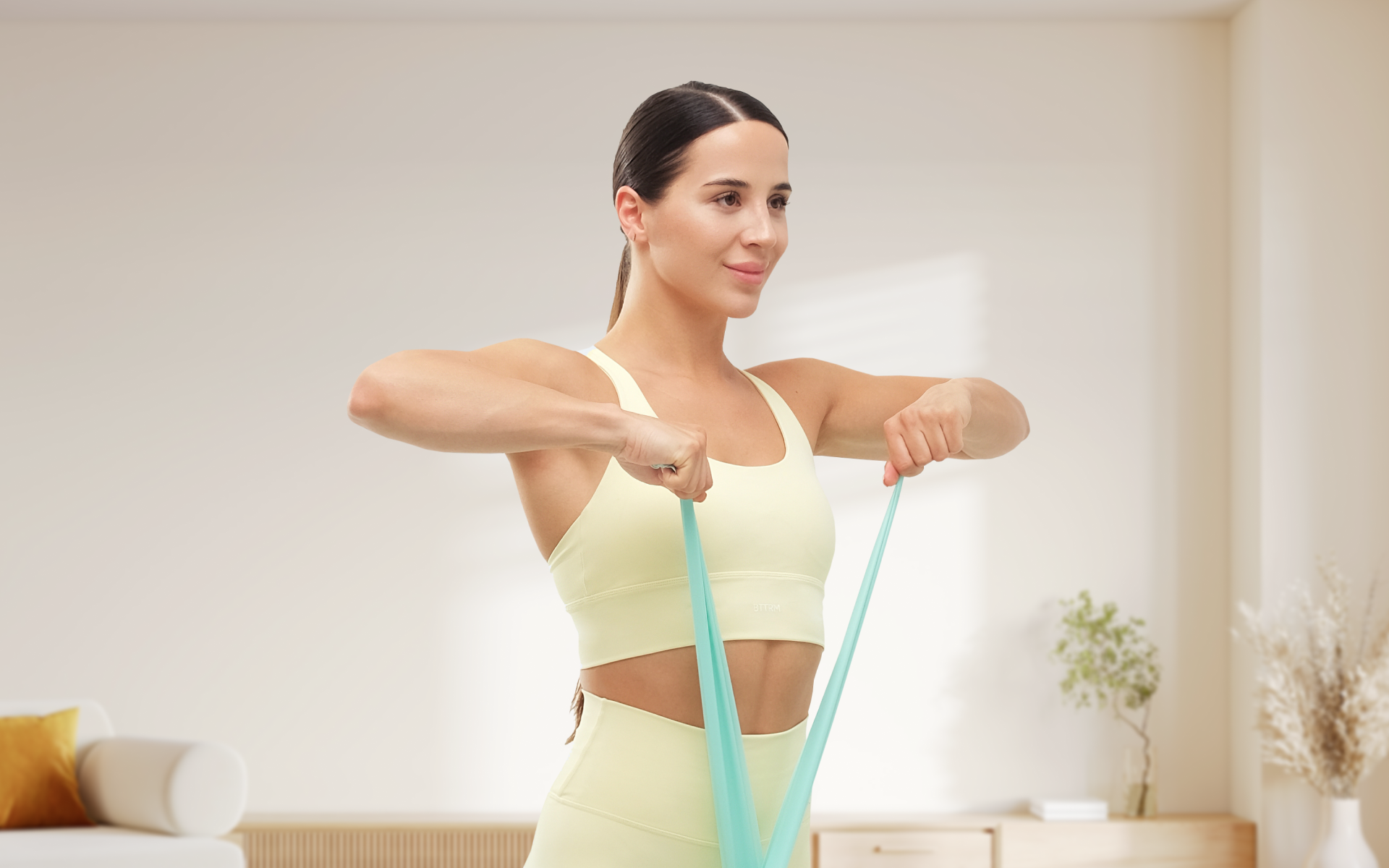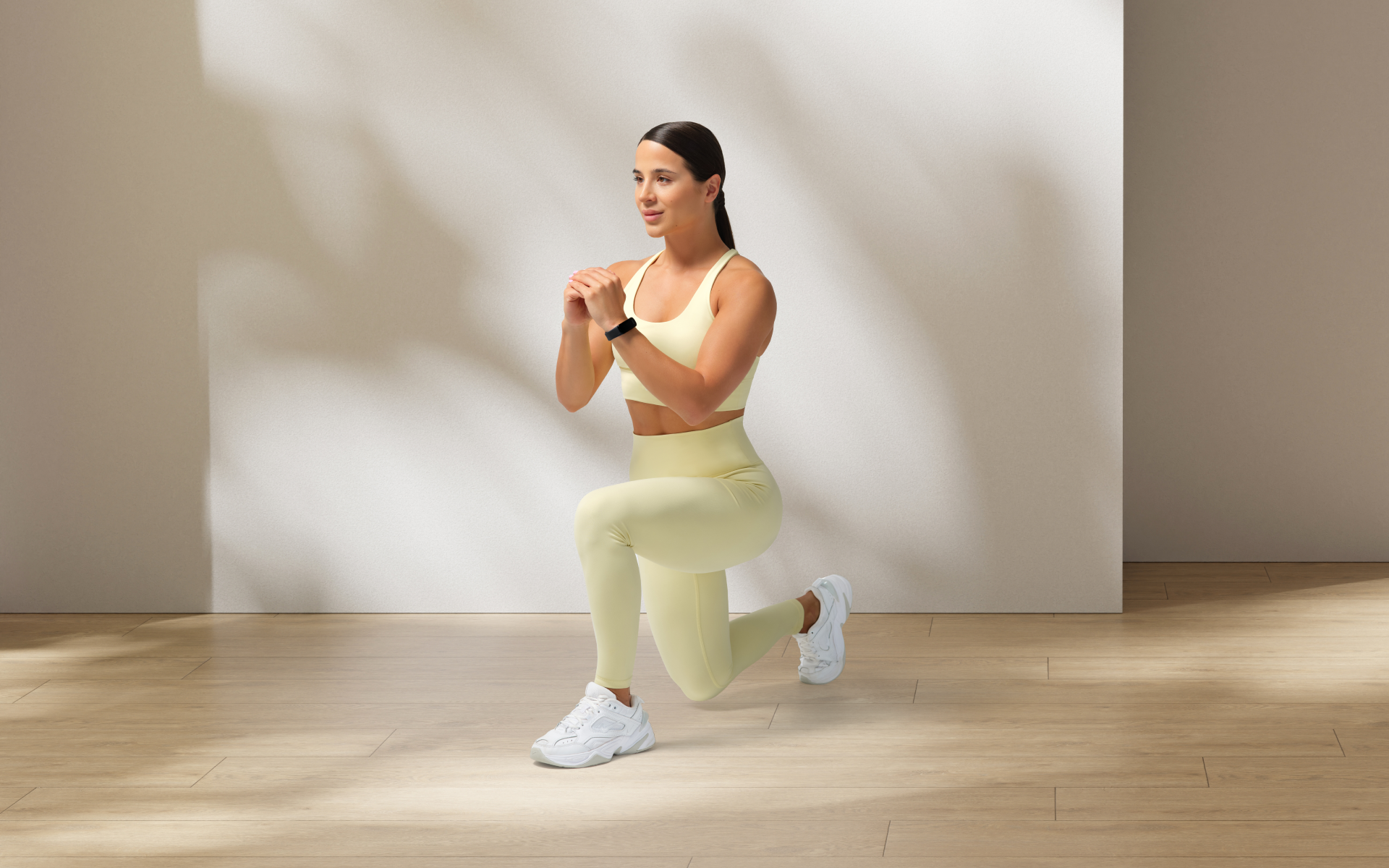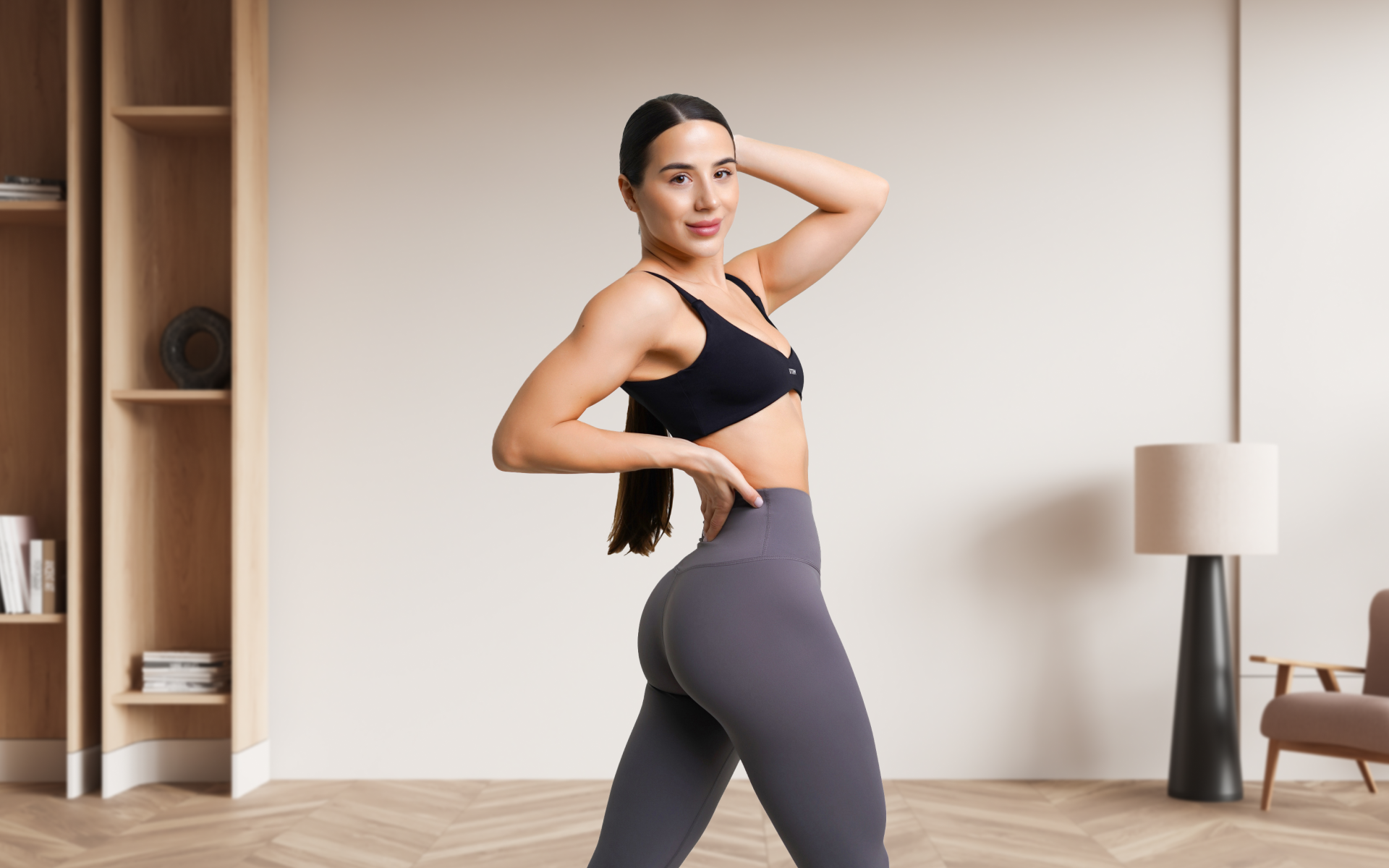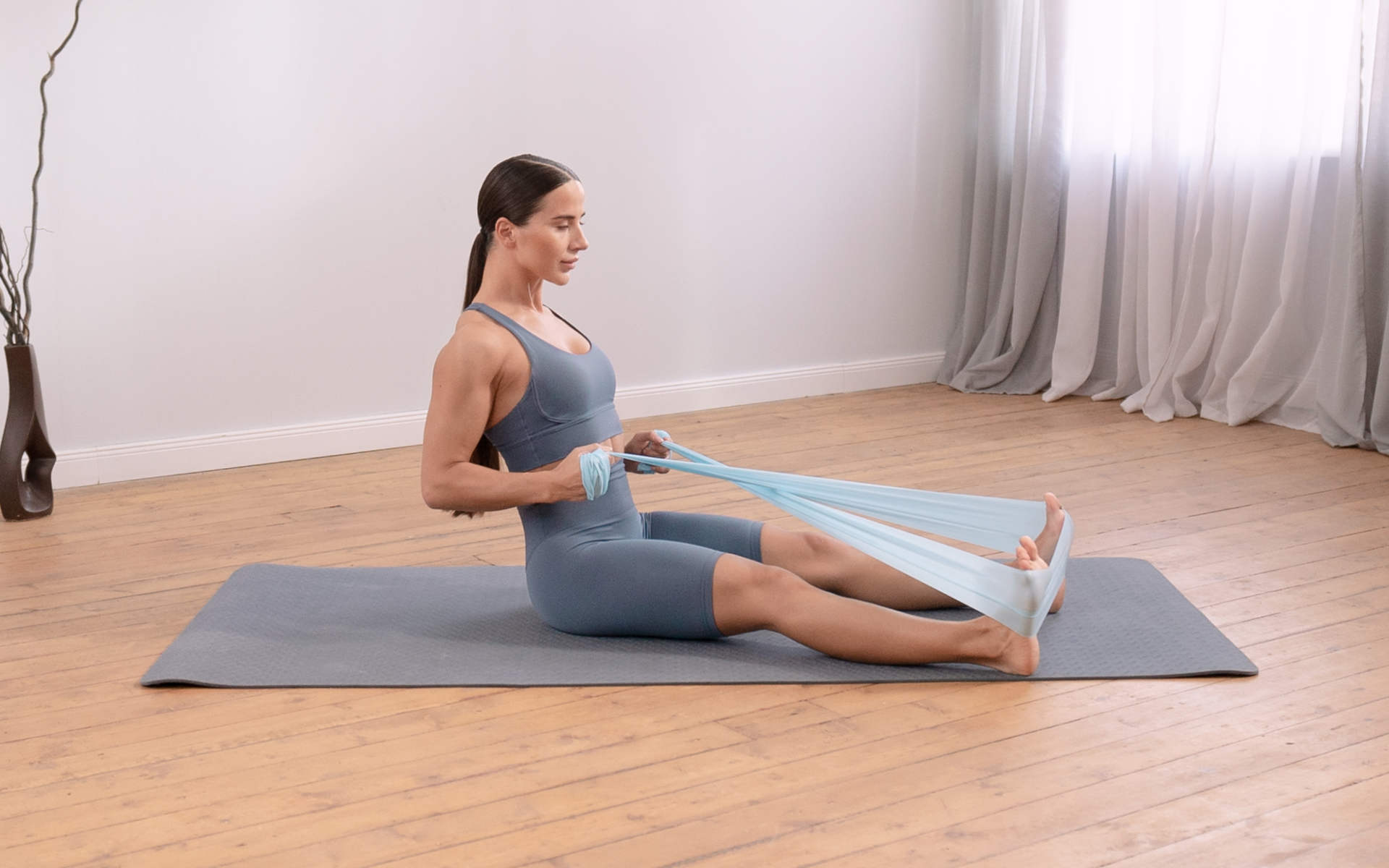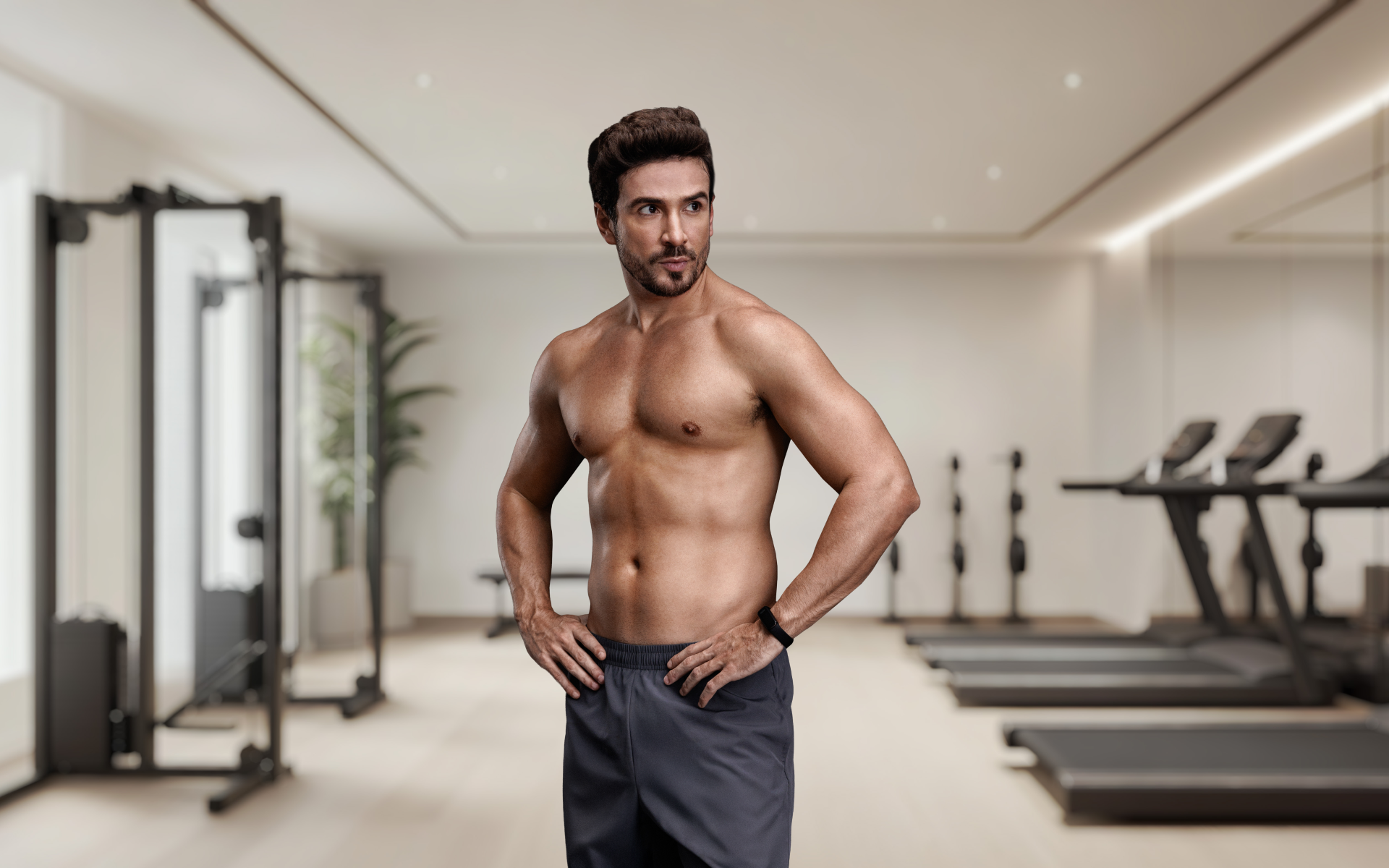Developing the upper chest through calisthenics can be a challenging endeavor for even seasoned bodyweight exercise enthusiasts. Unlike lifting weights, where incline bench presses and dumbbell flyes can easily isolate the muscle group, calisthenics relies on mastering more complex movements.
While they’re effective, techniques such as decline push-ups, ring dips, and archer push-ups require significant balance, coordination, and strength. This makes progress feel slow and hard-earned.
However, with detailed guidance, patience, and consistent practice, you can unlock new levels of chest development through calisthenics and overcome these specific challenges.
Can You Work the Upper Chest with Calisthenics?
Yes, you can effectively work the upper chest with calisthenics. Research has shown that specific bodyweight exercises can target the upper pectoral muscles without any equipment (1).
Upper chest calisthenics, such as decline push-ups, position your body in a way that emphasizes the upper portion of your pecs. When performing upper chest push-ups, elevating your feet on a raised surface shifts the focus toward the clavicular head of the pectoralis major.
In addition, when executed with rings or parallel bars, the chest dip engages the upper chest muscles more intensively than standard dips. For those who are looking for upper chest workouts at home, routines such as archer push-ups and pseudo-planche push-ups are invaluable.
Incorporating these exercises into your calisthenics chest workout can yield significant improvements in upper chest muscle definition and strength.
Can You Actually Train the Upper Chest?
Yes, you can train the upper chest with calisthenics successfully and many athletes have done so with impressive results. Engaging the upper chest, particularly the clavicular head of the pectoralis major, is achievable through strategically chosen exercises.
For example, decline push-ups are essential. By elevating your feet, you shift the emphasis to the upper pecs. According to research published in the Journal of Strength and Conditioning Research, variations such as archer push-ups and dips with an upper chest focus enhance muscle activation.
Consistency is key and integrating these exercises into your routine over time will bolster the upper chest definition. Just remember, persistence pays off. Engage in these upper chest calisthenics regularly, and you’ll witness noticeable strength and growth.
BetterMe is your fast-track ticket to a long-lasting weight loss! Tailor your fitness journey and maximize your results with just a couple of swipes!
What Push-Ups Work the Upper Chest?
When it comes to targeting the upper chest through calisthenics, certain push-up variations are particularly effective. The push-ups listed below are designed to engage the clavicular head of the pectoralis major, which will ensure a focused and efficient workout. These exercises can be seamlessly incorporated into your routine to enhance upper chest strength and definition.
Decline Push-Ups
Decline push-ups are a cornerstone of upper chest calisthenics. By elevating your feet on a raised surface such as a bench or chair, your body adopts an angle that places more stress on the upper portion of your pectoral muscles, specifically targeting the clavicular head of the pectoralis major.
This shift in focus from traditional push-ups ensures your upper chest receives an optimal workout, which makes it an excellent exercise for upper chest workouts at home.
Not only do decline push-ups enhance muscle definition, they also boost overall upper-body strength and stability. These push-ups are perfect for a calisthenics chest workout with no equipment and can be adjusted in terms of difficulty by varying the height of your foot elevation.
Chest Dip
When performed using rings or parallel bars, chest dips are a powerful exercise for honing your upper chest muscles without equipment. Unlike standard dips, which are done with a more upright torso, chest dips involve a slight forward lean, which results in greater muscle recruitment of the pectoral muscles. While this exercise doesn’t specifically target the upper chest, it does an excellent job of activating the entire pectoralis major, in addition to the triceps and anterior deltoids. By incorporating these dips into your regimen, you will ensure your chest receives the focused workout it needs for significant growth and definition.
How Do You Work Your Upper Chest?
Targeting the upper chest muscles through calisthenics may seem challenging, but the exercises in this guide are designed to effectively focus on the upper pectoral region. `
By regularly including these specific movements in your workout routine, you can achieve noticeable muscle growth and definition in the upper chest. The keys are patience, strategic exercise selection, and dedication to perfecting your technique.
Push-Ups
Push-ups are a versatile and effective exercise that targets multiple muscle groups, including the upper chest. When performed correctly, push-ups work the pectoralis major, anterior deltoids, triceps, and core muscles.
For the upper chest, adjustments in hand placement and body angle can shift the focus to the clavicular head of the pectoralis major, which enhances muscle activation and promotes balanced chest development.
How to Perform Push-Ups:
- Start Position: Start in a high plank position with your hands placed slightly wider than shoulder-width apart and your feet together or a few inches apart.
- Body Alignment: Ensure your body forms a straight line from head to heels, engaging your core and glutes to maintain alignment.
- Lowering Phase: Slowly bend your elbows and lower your chest toward the floor, keeping your elbows at a 45-degree angle relative to your body.
- Depth: Aim to bring your chest close to the floor, stopping just before it makes contact.
- Press Up: Push through your palms to extend your elbows and return to the starting position.
- Consistency: Maintain a steady pace, avoiding jerky movements.
- Repetition: Repeat for the desired number of repetitions, typically 10-15 per set.
Read more: The Simplest Lower Back Calisthenics Guide for Beginners
Decline Push-Ups
Decline push-ups are an advanced variation where your feet are elevated, which places more emphasis on the upper chest.
This position primarily targets the clavicular head of the pectoralis major while also engaging the shoulders and triceps. Incorporating decline push-ups into your routine helps build strength and definition in the upper chest.
How to Perform Decline Push-Ups:
- Setup: Place your feet on an elevated surface such as a bench, chair, or step.
- Hand Placement: Position your hands slightly wider than shoulder-width apart on the floor.
- Body Position: Keep your body in a straight line from your head to your feet, engaging your core muscles.
- Lowering Phase: Bend your elbows to lower your chest toward the floor, ensuring they’re at an approximately 45-degree angle to your torso.
- Depth: Lower until your chest almost touches the ground.
- Push Up: Press through your hands to straighten your arms and return to the starting position.
- Repetition: Continue for the desired number of repetitions, maintaining control throughout the exercise.
Diamond Push-Ups
Diamond push-ups focus intensely on the triceps and also enhance the upper chest and overall chest definition. The unique hand positioning with fingers forming a diamond shape shifts a significant portion of the workload to the inner and upper parts of the chest.
How to Perform Diamond Push-Ups:
- Hand Placement: Form a diamond shape with your hands by touching your index fingers and thumbs together.
- Starting Position: Start in a high plank position, ensuring your hands are directly under your chest.
- Alignment: Keep your body in a straight line from head to heels, engaging your core muscles.
- Lowering Phase: Slowly bend your elbows and lower your chest toward the diamond shape between your hands.
- Depth: Aim to bring your chest close to your hands without touching the floor.
- Press Up: Push through your hands to straighten your arms and return to the starting position.
- Repetition: Perform the desired number of repetitions, keeping your movements smooth and controlled.
Pike Push-Ups
Pike push-ups are a fantastic bodyweight exercise that targets the shoulders and upper chest while also engaging the core. By adjusting the angle of your body, you can effectively shift the emphasis to the upper pectoral muscles.
How to Perform Pike Push-Ups:
- Starting Position: Start in a downward dog position with your hands shoulder-width apart and your hips raised high.
- Body Position: Keep your head between your arms and your spine straight.
- Lowering Phase: Bend your elbows and lower the top of your head toward the floor, keeping your elbows flared out slightly.
- Depth: Stop just before your head touches the ground.
- Push Up: Extend your elbows to lift your head back to the starting position.
- Repetition: Repeat for the desired number of repetitions, focusing on maintaining control and proper form.
Wide-Grip Push-Ups
A 2016 study in the Journal of Physical Therapy Science found that wide-grip push-ups elicit the greatest muscle activity in the serratus anterior and biceps brachii. This is in contrast to the standard width and narrow push-ups, which result in greater muscle activation of the pectoralis major, pectoralis minor, and triceps (6). By incorporating wide-grip push-ups into your routine, you’ll develop a more well-rounded routine with better overall muscle definition.
How to Perform Wide-Grip Push-Ups:
- Hand Placement: Place your hands wider than shoulder-width apart.
- Starting Position: Assume a high plank position with your body in a straight line.
- Lowering Phase: Bend your elbows and lower your chest toward the floor.
- Depth: Lower until your chest is near the ground.
- Push Up: Press through your hands to return to the starting position.
- Repetition: Continue for the desired number of repetitions, keeping your movements smooth and controlled.
If you’ve mustered up the courage to crush your weight loss goal, let Betterme take the sting out of this demanding process. Our app will help you restructure your habits, remold your life and crank up your fitness results!
Archer Push-Ups
Archer push-ups are a challenging variation that targets the chest, triceps, and shoulder muscles. This exercise mimics the motion of drawing a bow, with one arm performing the majority of the push-up work while the other assists, which helps build unilateral upper body strength.
How to Perform Archer Push-Ups:
- Starting Position: Start in a high plank position with your hands placed significantly wider than shoulder-width apart.
- Body Position: Shift your weight to one side, bending the elbow of that arm while keeping the opposite arm straight.
- Lowering Phase: Lower your chest toward the bent arm while keeping the other arm extended.
- Depth: Lower until your chest nears the ground on the bent arm side.
- Push Up: Extend the bent arm and return to the starting position, then switch sides.
- Repetition: Alternate sides for each repetition, ensuring an even number of reps on both sides.
Clap Push-Ups
Clap push-ups are a plyometric exercise that adds an explosive element to the traditional push-up. This variation works the chest, shoulders, and triceps and enhances power, speed, and coordination.
How to Perform Clap Push-Ups:
- Starting Position: Start in a high plank position with your hands slightly wider than shoulder-width apart.
- Lowering Phase: Bend your elbows to lower your chest toward the floor.
- Explosive Push: Push up explosively, using enough force to lift your hands off the ground.
- Clap: Quickly clap your hands together below your chest before placing them back on the ground.
- Landing: Absorb the impact by bending your elbows as you land and immediately transition into the next repetition.
- Repetition: Perform the desired number of repetitions, ensuring each one is as explosive as possible.
Shoulder Tap Push-Ups
Shoulder tap push-ups add an element of instability and core engagement by incorporating a shoulder tap in each rep. This variation requires balance and helps improve overall upper body strength and coordination.
How to Perform Shoulder Tap Push-Ups:
- Starting Position: Assume a high plank position with your hands shoulder-width apart.
- Lowering Phase: Bend your elbows to lower your chest toward the floor.
- Push Up: Press through your hands to return to the starting position.
- Shoulder Tap: Lift one hand off the ground and tap the opposite shoulder, keeping your hips as stable as possible.
- Alternate: Place your hand back down and repeat the shoulder tap with the other hand.
- Repetition: Continue alternating shoulder taps for the desired number of repetitions.
Incline Push-Ups
Incline push-ups are a beginner-friendly variation that reduces the amount of body weight that is being lifted, placing less strain on the upper body while still effectively targeting the chest, shoulders, and triceps.
How to Perform Incline Push-Ups:
- Setup: Place your hands on an elevated surface such as a bench, table, or step, slightly wider than shoulder-width apart.
- Starting Position: Assume a straight body line from head to heels, engaging your core muscles.
- Lowering Phase: Bend your elbows to lower your chest toward the elevated surface.
- Depth: Lower until your chest is near the surface.
- Push Up: Press through your hands to return to the starting position.
- Repetition: Perform the desired number of repetitions, maintaining proper form throughout.
Wall Push-Ups
Wall push-ups are an excellent starting point for beginners or those who are looking for a gentler variation. This exercise reduces the load on the upper body and is perfect for improving strength and form.
How to Perform Wall Push-Ups:
- Setup: Stand facing a wall, placing your hands on the wall at shoulder height and slightly wider than shoulder-width apart.
- Starting Position: Keep your body straight from head to heels, leaning slightly into the wall.
- Lowering Phase: Bend your elbows to bring your chest closer to the wall.
- Depth: Lower until your forehead is near the wall.
- Push Up: Press through your hands to straighten your arms and return to the starting position.
- Repetition: Continue for the desired number of repetitions, focusing on maintaining a straight body line and controlled movements.
Read more: Calisthenics Shoulder Exercises: Techniques and Workouts
Absolutely! Calisthenics exercises such as push-ups, dips, and their various progressions can effectively build a big and strong chest. Consistency, proper form, and progressive overload are the keys to seeing significant muscle growth using your own body weight (4). It’s not recommended to work out the upper chest every day. Muscles need time to recover and grow, so it’s important to allow at least 48 hours of rest between intense upper chest sessions. Incorporating rest days will help prevent overtraining and reduce injury risk (5). To target the upper chest using body weight exercises, consider incorporating incline push-ups, decline pike push-ups, and archer push-ups. These variations modify the angle of your body, placing more emphasis on the upper chest muscles for effective targeting and growth. Yes, calisthenics is excellent for chest development. It engages multiple muscle groups at once, which promotes overall upper-body strength and endurance (65). By using variations such as wide grip push-ups, clap push-ups, and archer push-ups, you can achieve a well-defined and powerful chest with calisthenics.FAQs
Can I build a big chest with calisthenics?
Can I do an upper chest workout every day?
How do you target the upper chest using body weight?
Is calisthenics good for the chest?
The Bottom Line
Calisthenics provides a versatile and effective approach to building the chest muscles without the need for weights or gym equipment.
Whether you’re a beginner who is just starting with wall push-ups or an advanced athlete who is mastering clap push-ups, incorporating these exercises into your routine can lead to significant strength and muscle gains.
Always remember to maintain proper form, ensure rest days for recovery, and progressively challenge yourself to see the best results.
DISCLAIMER:
This article is intended for general informational purposes only and does not serve to address individual circumstances. It is not a substitute for professional advice or help and should not be relied on for making any kind of decision-making. Any action taken as a direct or indirect result of the information in this article is entirely at your own risk and is your sole responsibility.
BetterMe, its content staff, and its medical advisors accept no responsibility for inaccuracies, errors, misstatements, inconsistencies, or omissions and specifically disclaim any liability, loss or risk, personal, professional or otherwise, which may be incurred as a consequence, directly or indirectly, of the use and/or application of any content.
You should always seek the advice of your physician or other qualified health provider with any questions you may have regarding a medical condition or your specific situation. Never disregard professional medical advice or delay seeking it because of BetterMe content. If you suspect or think you may have a medical emergency, call your doctor.
SOURCES:
- EFFECT OF PROGRESSIVE CALISTHENIC PUSH-UP TRAINING ON MUSCLE STRENGTH & THICKNESS (2016,library.ndsu.edu)
- No Time to Lift? Designing Time-Efficient Training Programs for Strength and Hypertrophy: A Narrative Review (20156,nih.gov)
- Progression of volume load and muscular adaptation during resistance exercise (2014,nih.gov)
- Specific Training Effects of Concurrent Aerobic and Strength Exercises Depend on Recovery Duration (2016,journals.lww.com)
- The Effect of Breaking Up Sedentary Time with Calisthenics on Neuromuscular Function: A Preliminary Study (2022,nih.gov)
- Effect of the push-up exercise at different palmar width on muscle activities (2016,nih.gov)






